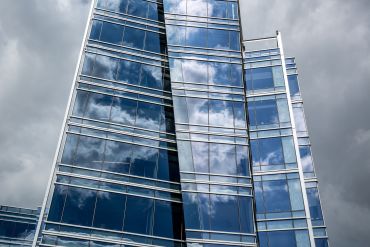Americans Are Moving to At-Risk Climate Areas for Cheaper Housing
By Chava Gourarie July 24, 2023 3:50 pm
reprints
More Americans are moving toward the triple threats of fire, flood and heat than away from them, according to a report from real estate listings and research site Redfin.
In the last two years, areas at risk of extreme weather events have seen net migration of 1.5 million people, amid larger migration trends fueled by the pandemic, remote work and runaway housing prices.
The U.S. counties most vulnerable to floods had 384,000 more people move in than move out in 2021 and 2022, doubling the net migration of the previous two years, while counties with the highest wildfire risk saw 446,000 more people move in than out over the past two years, based on an analysis of Redfin data and risk scores from climate nonprofit First Street Foundation.
Even more people are heading to areas most at risk of extreme heat, a risk that may need to be recalculated given the current record-breaking heat wave suffocating large swaths of the country. The nation’s hottest areas saw 629,000 more people move in than out in 2021 and 2022, on top of the roughly 537,000 people who moved there the two years prior to that.
Destinations range from Florida — including its west coast, which Hurricane Ian ravaged last year — as well as California’s Inland Empire, Central Texas, Utah and Arizona, where residents face risk of drought in addition to extreme heat.
Two prime examples are Florida’s Lee County, home to Fort Myers, and California’s Riverside County, home to Riverside and Palm Springs. Lee County and Riverside County gained 60,000 and 40,000 people, respectively, in 2021 and 2022. Both markets are seen as alternatives to the largely unaffordable metro areas within their orbit — Miami in the case of Lee County and Los Angeles in Riverside County’s case — and both are highly exposed to either flood or wildfire risk.
Two exceptions to this pattern are New Orleans and Paradise, Calif., both of which saw an outflow of residents after suffering either devastating flooding (Hurricane Ida) or wildfires (Camp Fire) in the last several years.
The increase in home prices is one factor contributing to this trend, but a related factor is that more homes are being built in risk-prone areas. More than half of American homes built in the last decade face wildfire risk, while 45 percent are subject to drought, according to an earlier Redfin analysis. In the Southwest, especially, where development has boomed in places like Arizona, Colorado and California, at least 90 percent of new homes have been built in areas exposed to wildfire risk.
These migratory patterns could shift, particularly as (or if) markets become uninsurable, or if the specter of long-term risk becomes a more immediate threat.
Chava Gourarie can be reached at cgourarie@commercialobserver.com.


